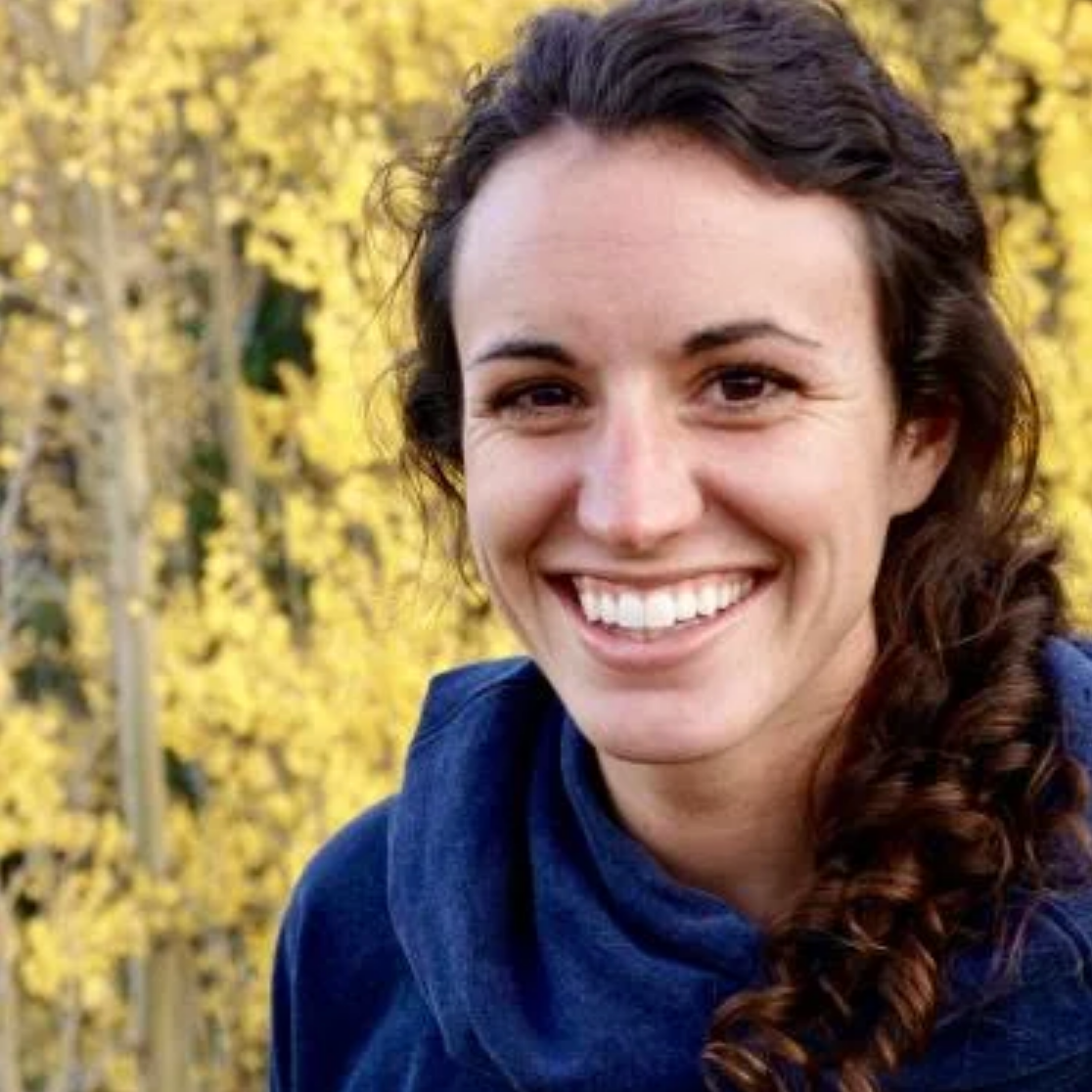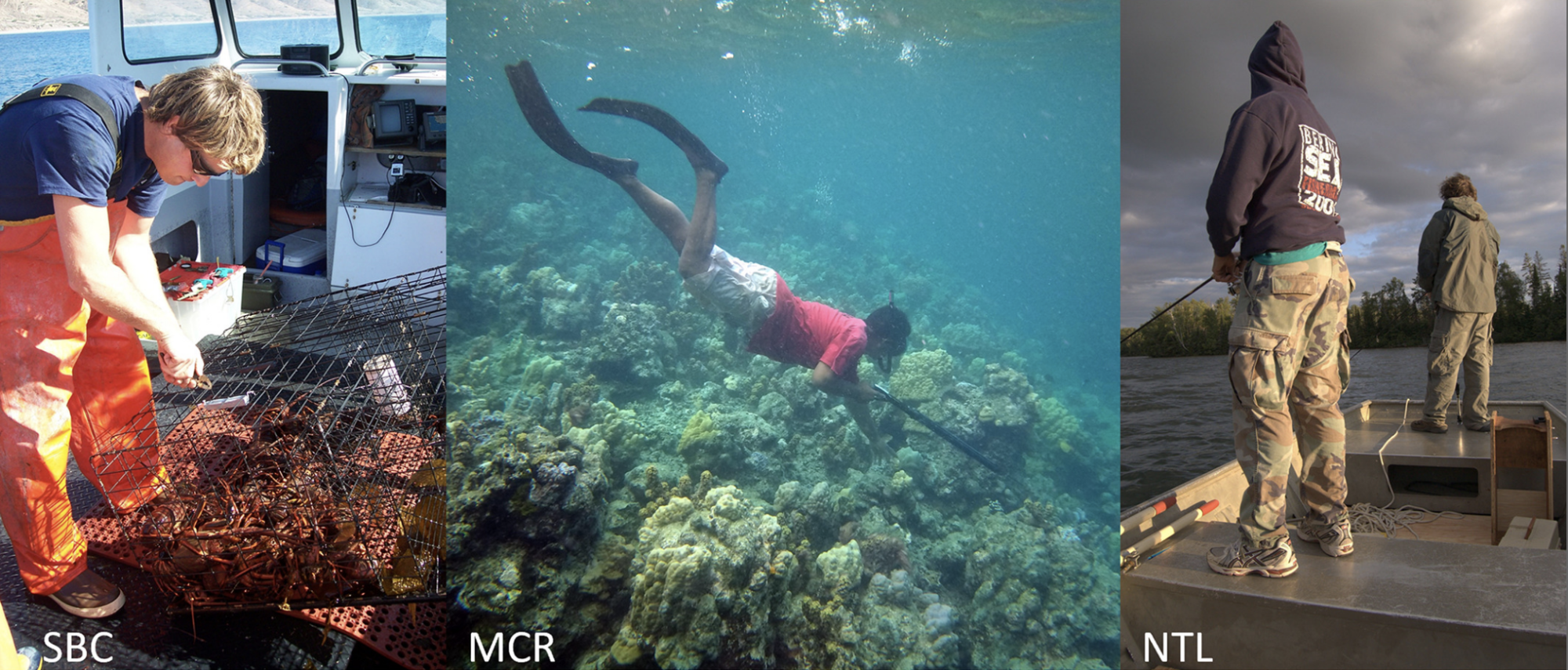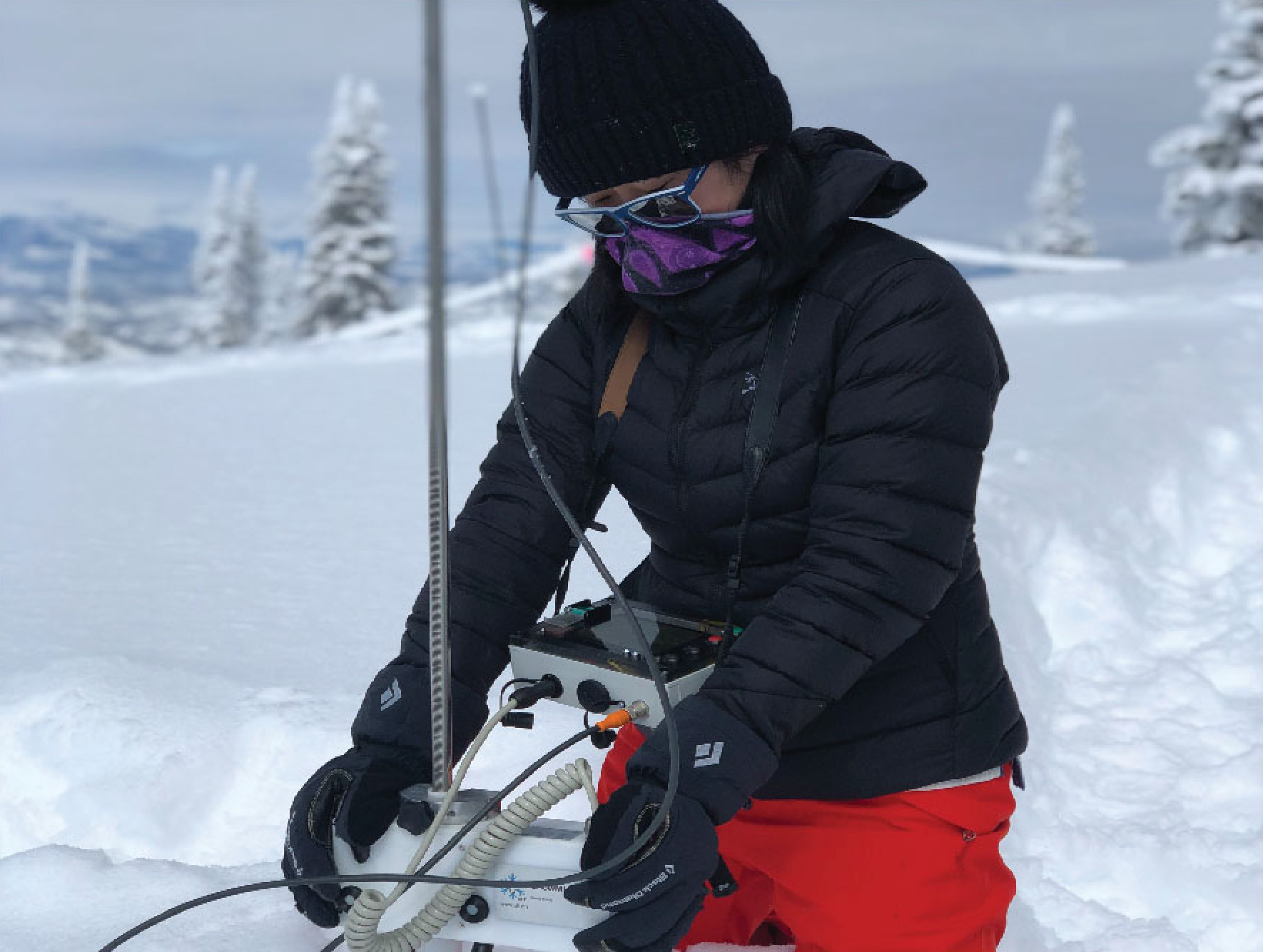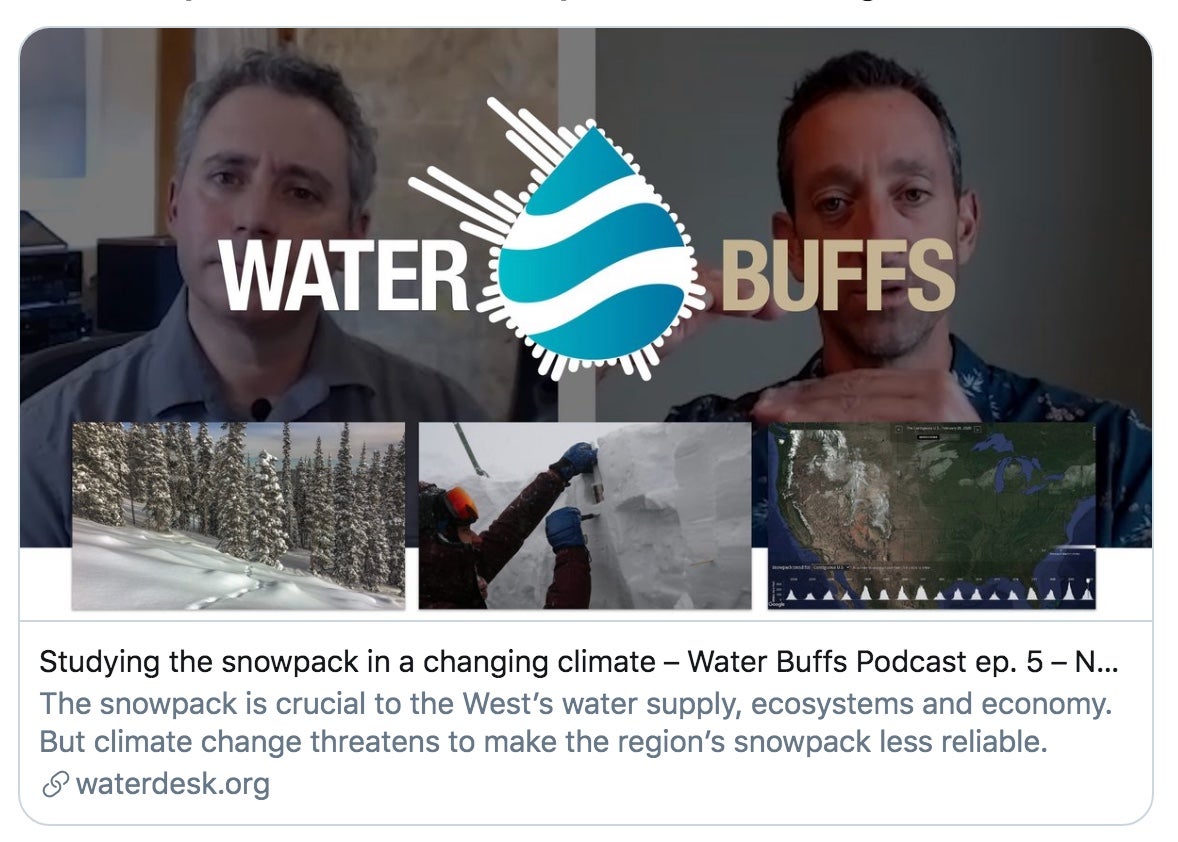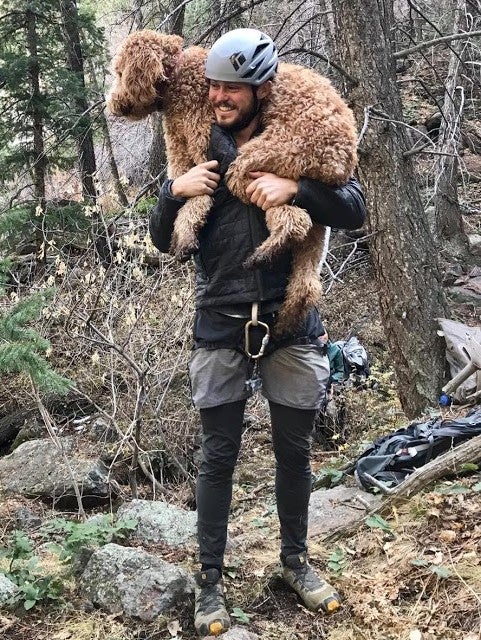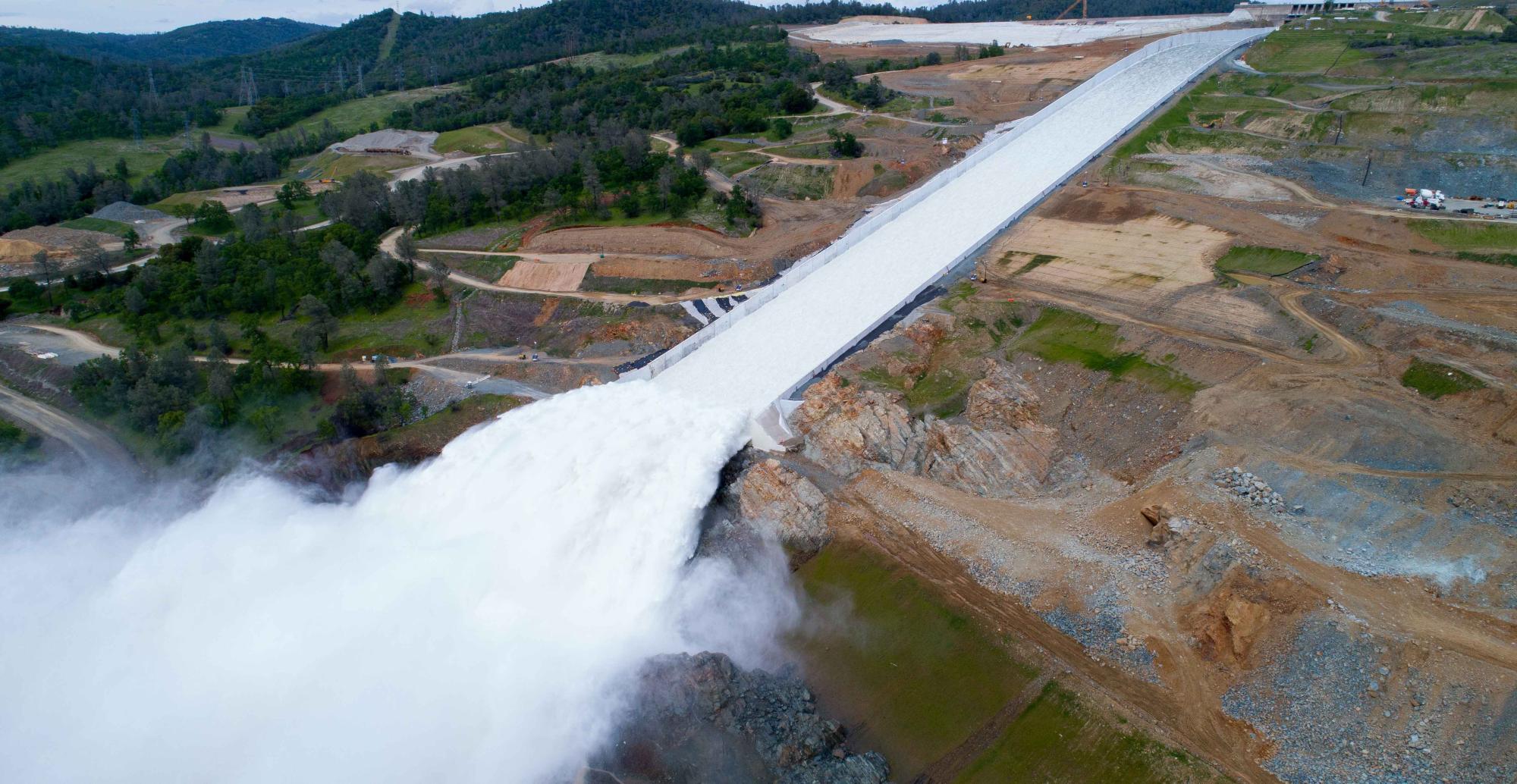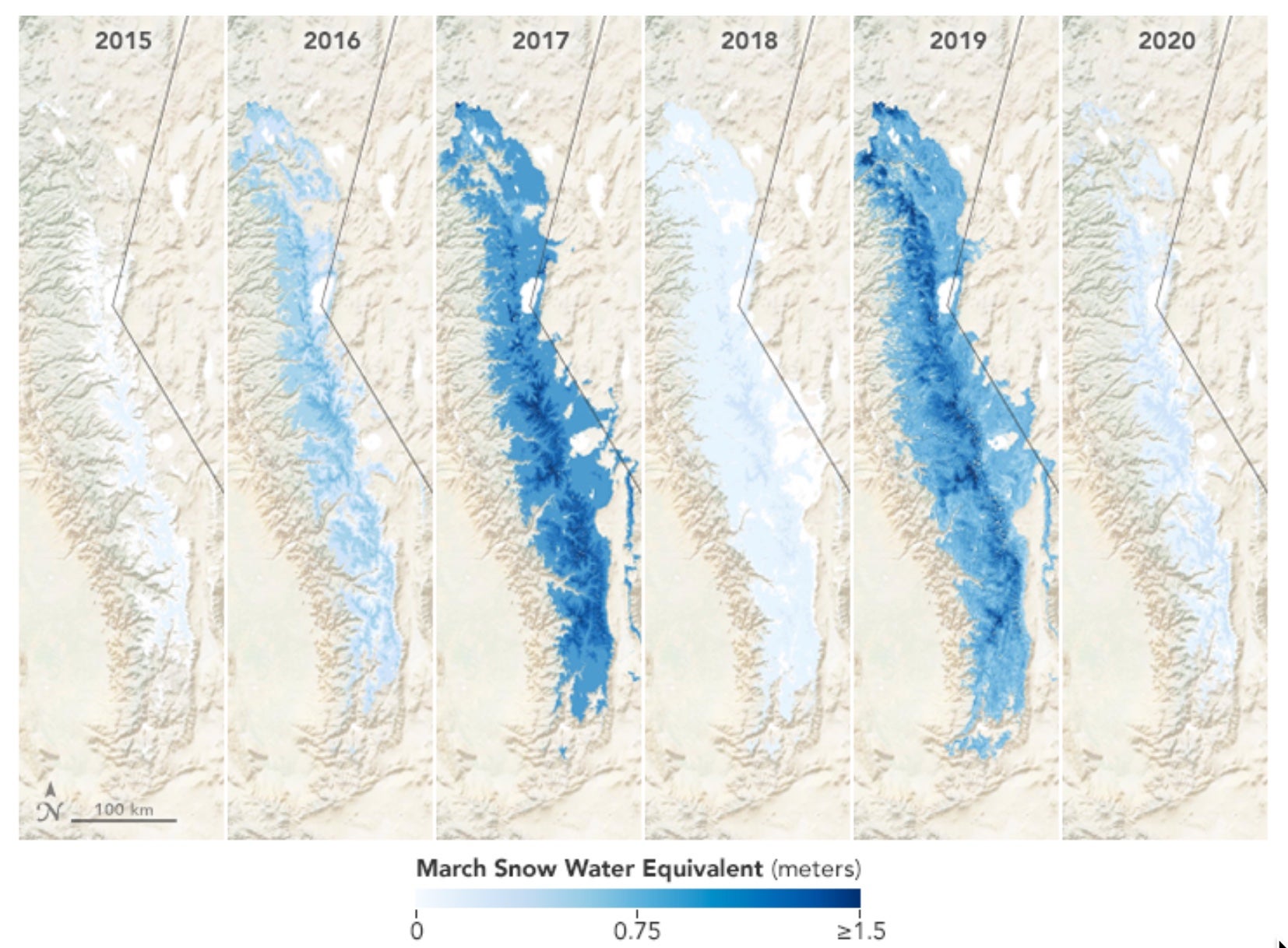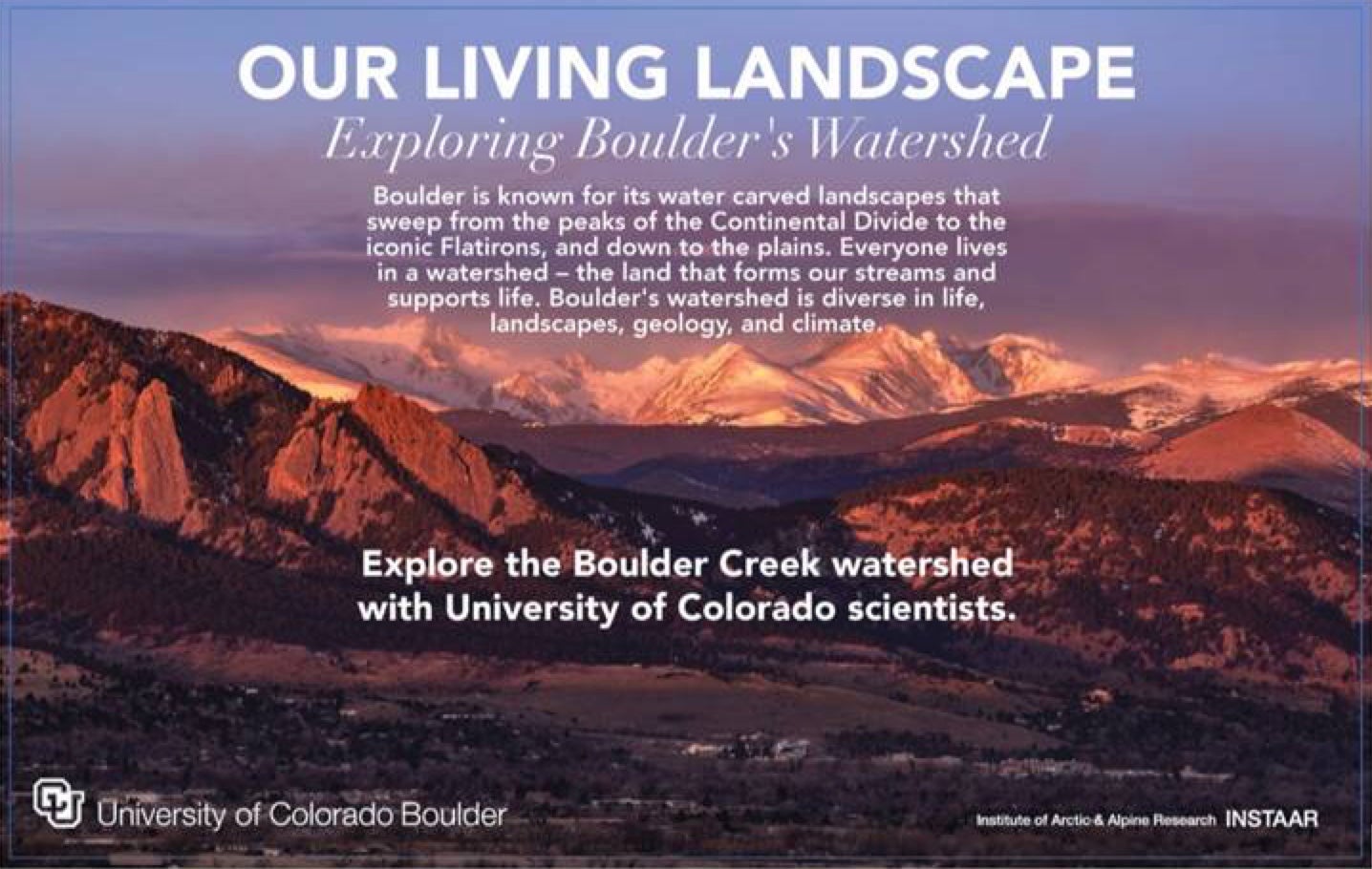Blog - Mountain Hydrology Group
We are primarily focused on the processes controlling hydrologic fluxes in cold regions and within the greater Earth system. Improved understanding of these processes is essential for sustainable management of natural resources and for making informed environmental policy decisions.
Click any image to zoom
Noah Molotch awarded an Art+Science fellowship in partnership with artist Hannah Taylor
November 15, 2022. Noah Molotch was awarded a Colorado Art Science Environment (CASE) fellowship, working in partnership with CASE fellow and artist Hannah Taylor of Frisco, Colorado. CASE fellows "work in teams to produce artworks that will be exhibited at the Colorado State Capitol" starting in May 2023 until September 2023. The Molotch/Taylor exhibition will show how Coloradans in Frisco view the interrelated challenges of water, drought, fire, and air quality.
Welcome two new group members: Millie Spencer and Patrick Saylor
August 20, 2022. Both are entering CU Boulder as students in the Geography department. Noah Molotch will be their primary advisor. We are looking forward to working with you!
Congratulations to Dr. Katherine Hale on her PhD defense
August 17, 2022. We congratulate Dr. Katherine Hale on her PhD defense. Kate has been an exemplary group member and we will miss her, along with the many talents she brought to the group.
Changes in air + water quality and wildlife populations + behavior during the COVID-19 pandemic
April 8, 2022. Noah Molotch was part of a collaborative effort to publish a paper looking at the anthropause, defined as "the period of disrupted human activity caused by the COVID-19 pandemic" using long-term social-ecological research. The paper considers three case studies to show how "long-term data can be used to document and interpret changes in air and water quality and wildlife populations and behavior coinciding with the anthropause".
Role of snow for liquid water storage and transmission in streamflow generation
March 8, 2022. Five group members (Ryan Webb, Keith Musselman, Siobhan Ciafone, Katherine Hale and Noah Molotch) have published a paper titled "Extending the vadose zone: Characterizing the role of snow for liquid water storage and transmission in streamflow generation". The five group members followed the distribution of liquid water during the spring snowmelt season in the Niwot Ridge saddle catchment, Colorado.
Read the article in Hydrological Processes >
Real-time estimation of snow water equivalent
November 2, 2021. We are excited to announce the publication of a group paper (Kehan Yang, Keith Musselman, Karl Rittger, Noah Molotch, and others), "Combining ground-based and remotely sensed snow data in a linear regression model for real-time estimation of snow water equivalent", outlining some of Kehan's doctoral research developing a robust linear regression snow water equivalent (SWE) model that is used in near real time in water management operations.
Read the paper in Advances in Water Resources >
Congratulations to Dr. Kehan Yang on her flawless doctoral defense
July 19, 2021. She passed with flying colors! We will miss you Kehan and it has been our pleasure to work alongside you.
Noah Molotch about "Studying the snowpack in a changing climate", new Water Desk podcast
October 28, 2020. An interesting and in-depth look at snowpack as it relates to water in the west by our very own CWEST and Mountain Hydrology Group director Noah Molotch. From the Water Desk podcast page: The snowpack is crucial to the West’s water supply, ecosystems and economy. But climate change threatens to make the region’s snowpack thinner and less reliable. We talk to a leading snowpack researcher about how scientists are analyzing the past, present and future of the West’s snow. Water Desk Director Mitch Tobin talks to Noah Molotch, Director of the Center for Water Earth Science & Technology (CWEST) at the University of Colorado Boulder, about the importance of snow to our water supply and what the future may hold for the American West’s snowpack.
Welcome to Eric Kennedy our newest group member
August 17, 2020. We are pleased to welcome our newest member to the Mountain Hydrology Group, Eric Kennedy. Eric is an incoming MA student in the Geography program. His current research focuses on the impacts of changing snowmelt patterns on forest ecosystem processes with the goal of improving understanding of mountainous areas' vulnerability to climate change. Eric's research is motivated by previous work as a wildland firefighter and ski patroller in the Pacific Northwest and his avid mountain recreation habit.
Rain-on-Snow Flooding in the Feather River Basin, California
July 23, 2020. "We know that climate change is expected to increase the intensity of storm events in the Sierra Nevada, including extreme melt of deep mountain snowpack,” said Mountain Hydrology Group co-author Keith Musselman. “With our Oroville Dam case study, we highlight an example of potential threats to public safety and infrastructure associated with a warmer and more variable climate". A new paper analyzes the factors behind the February 2017 Oroville Dam spillways incident in California. The lead author, Brian Henn a former researcher at the Center for Western Weather and Water Extremes (CW3E) at Scripps Institution of Oceanography at the University of California San Diego put together a research team consisting of Keith Musselman, Leanne Lestak and Noah Molotch from the Mountain Hydrology group here at INSTAAR, and F. Martin Ralph director of the CW3E. The press release by Robert Monroe from Scripps News states that "Heavy snowmelt [from a series of atmospheric rivers] delivered a surge of runoff to Feather River and Lake Oroville". To read more about the research visit the press release and the paper.
Snow Cover in the Sierra Nevada
March 16, 2020. Our regression modeled SWE estimates for the Sierra Nevada were used for the NASA Image of the Day. The winter of 2019-2020 brought a range of extreme weather to the mid-latitudes of the Northern Hemisphere, with some areas receiving a deluge of moisture and others staying much drier than usual. California experienced the latter, as evidenced by the thin snowpack in the Sierra Nevada near the start of spring. Snow-covered areas, as seen in natural-color satellite imagery, make for an interesting visual, but such imagery does not tell a complete story because it does not account for the depth or density of the snow. A more meaningful indicator of the quality of the snowpack is snow-water equivalent—an estimate of how much water you would get if all of the snow melted at once. The maps (left) show snow-water equivalents across the Sierra Nevada in early March for each year between 2015 and 2020. Data for the maps, developed by the University of Colorado’s Center for Water, Earth Science, and Technology, are derived from ground-based data, computer models, and satellite imagery. They incorporate a data set from the Jet Propulsion Laboratory (JPL) called the MODIS Snow Covered Area and Grain-size (MODSCAG), which uses data from NASA’s Terra satellite to determine properties of the snow —- things like the area covered, grain size, and albedo —- that are useful for deriving accurate estimates of snow-water equivalent.
Opening Reception: INSTAAR's Boulder Creek Watershed Exhibit at the Museum of Boulder
January 13, 2020. We are excited to announce our opening of the educational exhibit "Our Living Landscape: Exploring Boulder's Watershed." The exhibit is at the Museum of Boulder from January 31st to March 31st, 2020. Come join us for an evening of celebration at the Open Reception (free to the public) Friday, January 31st, from 5:30 – 7:30 pm!
The Boulder Creek watershed exhibit is a collaboration between INSTAAR’s Boulder Creek Critical Zone Observatory, Niwot Ridge Long-term Ecological Research program, Center for Water Earth Science and Technology, and many partners including Boulder County Parks & Open Space, City of Boulder, United States Geological Survey, and more. It shares what we’ve discovered about the land, plants, animals, water, and climate of the place we all call home, over the course of decades of research in the watershed, with the community.
This exhibit was funded by the University of Colorado’s Office of Outreach and Engagement. In-kind contributions were provided by INSTAAR, BcCZO, NWT LTER, CWEST, CU Mountain Research Station, and the City of Boulder.




